September 18, 2023 mushrooms
Mushrooms: fragile, ephemeral, subversive, magical, alien.
My daughter, Tamar, brought to my attention the fact that these beings are closer to us on the evolutionary "tree", than trees and green plants. I couldn't shake the notion, once I had met one standing alone among the dead leaves after the July rains, that they are little sentient creatures sprouting up and living a short tenuous existence in the world around us, oblivious and blind, determined and active.

I have not identified most of those that follow, and do not suggest that you accept my identifications without question, as wild mushrooms may be poisonous, sometimes difficult to recognize by species, and I am very much an amateur in the world of fungus.
Ninja-like, a cap pushes up through the debris.
Charming, one imagines fairies.
The bright colours of some mushrooms are startling and otherworldly.
This "fairy-ring" of mushrooms is a fixture by our door. The grass is a different green where it grows.
The rain promoted a flourish of sprouts where last year there were two or three.
These yellow ones are chanterelles, or their imitative "false" relative, and possibly a third variety. They are much more plentiful this year, though still sparse. It is difficult for me to distinguish without close inspection, whether these are the real or the fake. But I am learning. See youtube link below. *
Here is what looks like a white chanterelle. I don't know if there are even white specimens here in the east. I don't eat wild mushrooms. It takes a developed eye to be sure you are picking a true edible. It is probably a good idea to spend some time with a knowledgeable mushroom hunter before eating any.
You can see flute-like resemblance to a chanterelle here, how the stem graduates to the cap.
This bright deformed lump of fungus is the lobster mushroom, named for its colour. It is edible, but I must stress again that one has to know what one is doing in eating them. This is actually a not-red mushroom attacked and transformed by a parasitic fungus which takes over the original mushroom (subversive!).
These are coral fungi. They come up in different colours, white, yellow, purple! and a brown. I don't know if the colour represents a different species or just the materials available in the soil.
Creepy, alien, this tooth fungus seems to explode into being.

Frail, and somehow reminiscent of Japanese art, these delightful little mushrooms seem too fragile for the forest floor.
This species forms a bowl, with its gills exposed.
I am amazed by the colours: The mushrooms often mimic the colours of the fallen leaves. Is this a camouflage happening? Is it because they access the same minerals as the leaves express as they die? On the one hand a mushroom, or creature, for that matter, will be coloured to blend perfectly with their surroundings, and on the other, will stand out in its fierce colouring. One looks for "intention" but the result is accidental selective evolution, not to be eaten, either because the lifeform is hidden by its camouflage or because it ressembles a poisonous lifeform of similar design.

Yes, this is that same yellow one, but I found some leaves to show the similarity of colour.

There is a branch of fungus that lives directly on trees. They make use of fallen wood but may also grow on trees still living, though I think it is a sign of the tree's illness when they take hold on a living tree.

See how the colour imitates the colour of the bark.
This puffball splits open and as it dries becomes a witch's purse. (I am sure I have read that somewhere.)
You can imagine what I call this species!
These are more photos from yesterday's walk. I must post this before I go out into the woods again or there will be more! I am enrapt! (if that is a word) Below, a sand dollar imitation.
Thank you for visiting. Be well.
Mumma Yaga
"Hypomyces lactifluorum, the lobster mushroom, contrary to its common name, is neither a mushroom nor a crustacean, but rather a parasitic ascomycete fungus that grows on certain species of mushrooms, turning them a reddish orange color[1] that resembles the outer shell of a cooked lobster. H. lactifluorum specifically attacks members of the genera Lactarius and Lactifluus (milk-caps), and Russula (brittlegills), such as Russula brevipesand Lactifluus piperatus in North America. At maturity, H. lactifluorum thoroughly covers its host, rendering it unidentifiable. Lobster mushrooms are widely eaten and enjoyed freshly foraged and cooked.[2]" Quoted from:





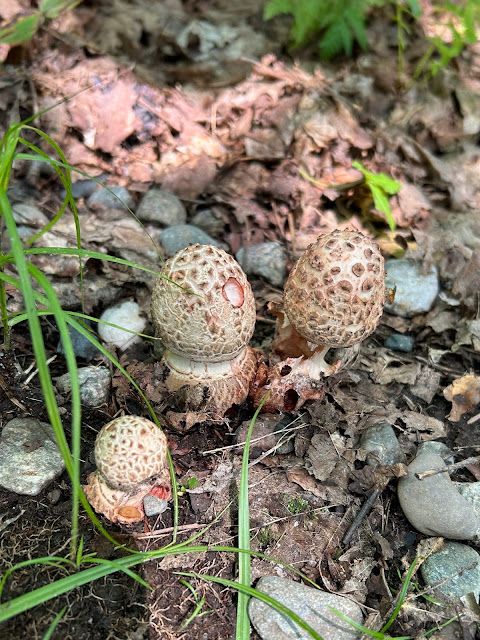
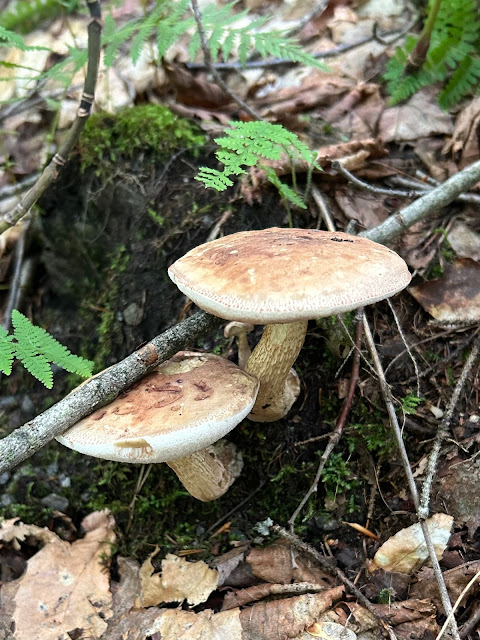




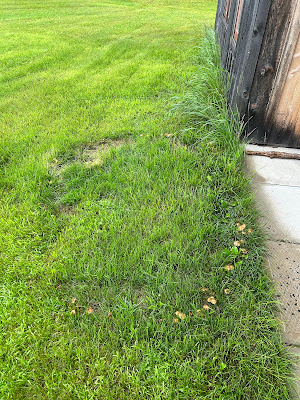



























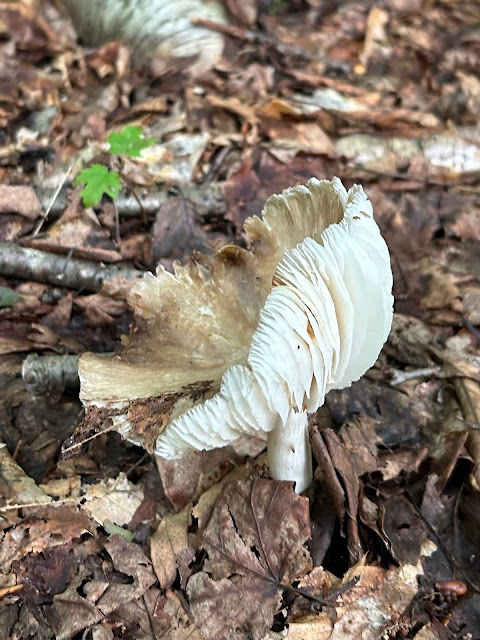

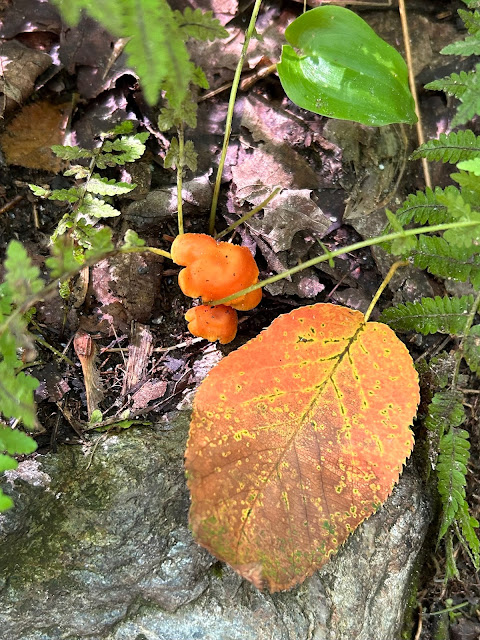







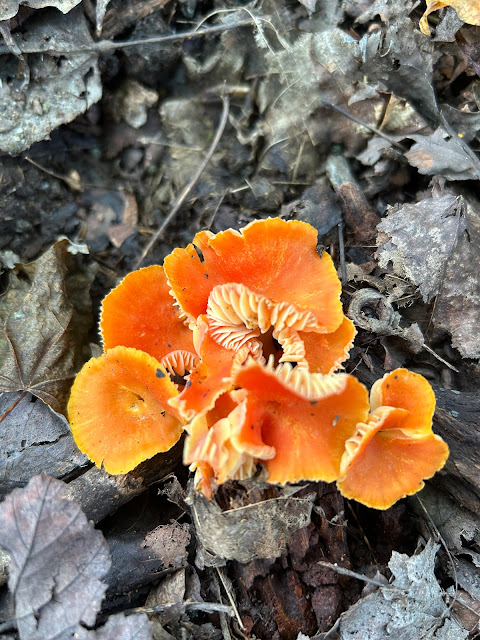



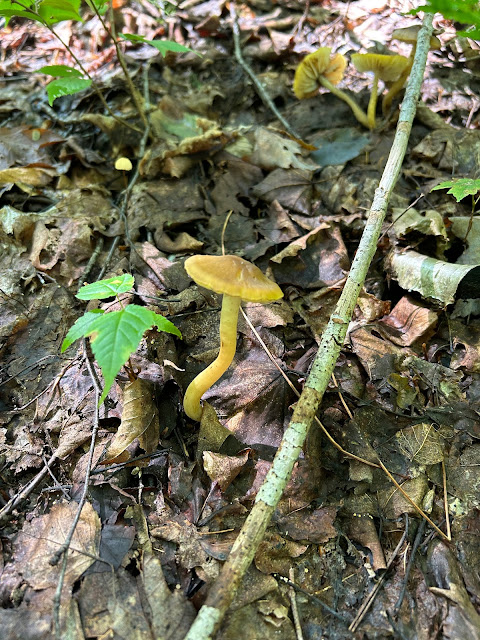








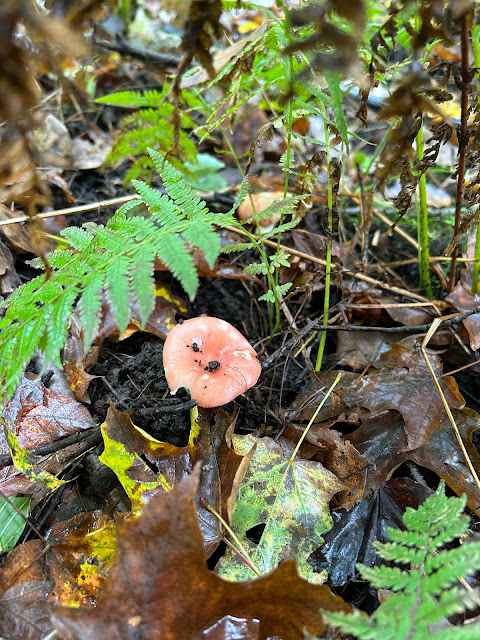







Comments
Post a Comment